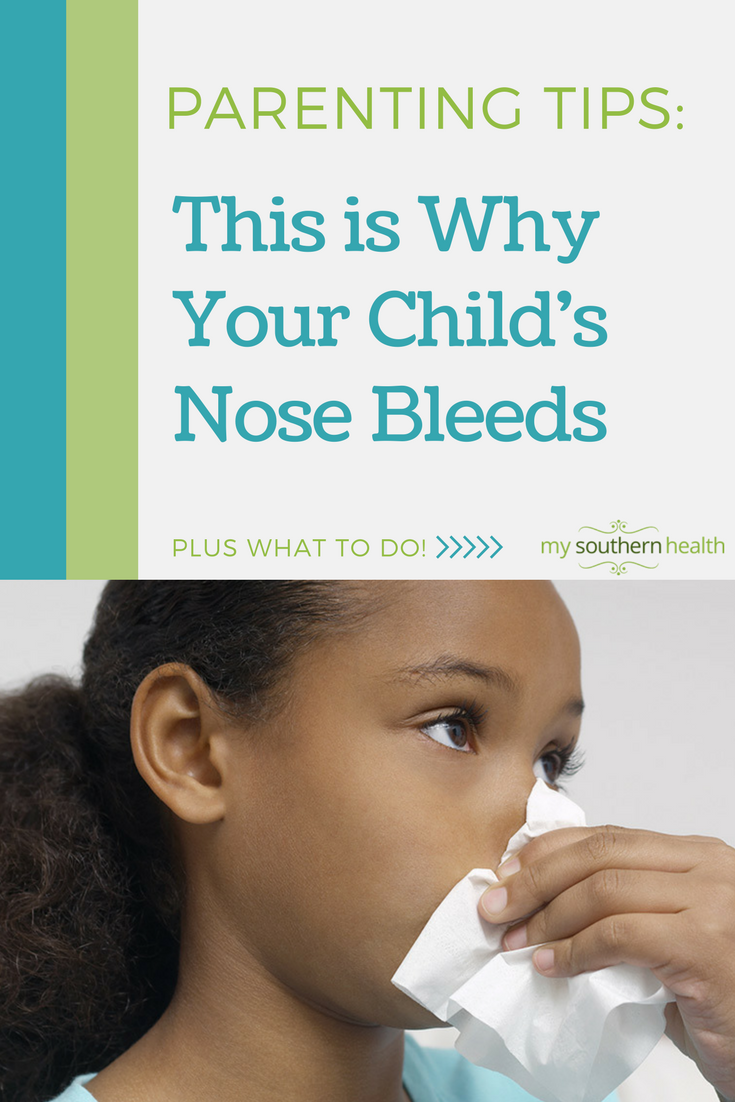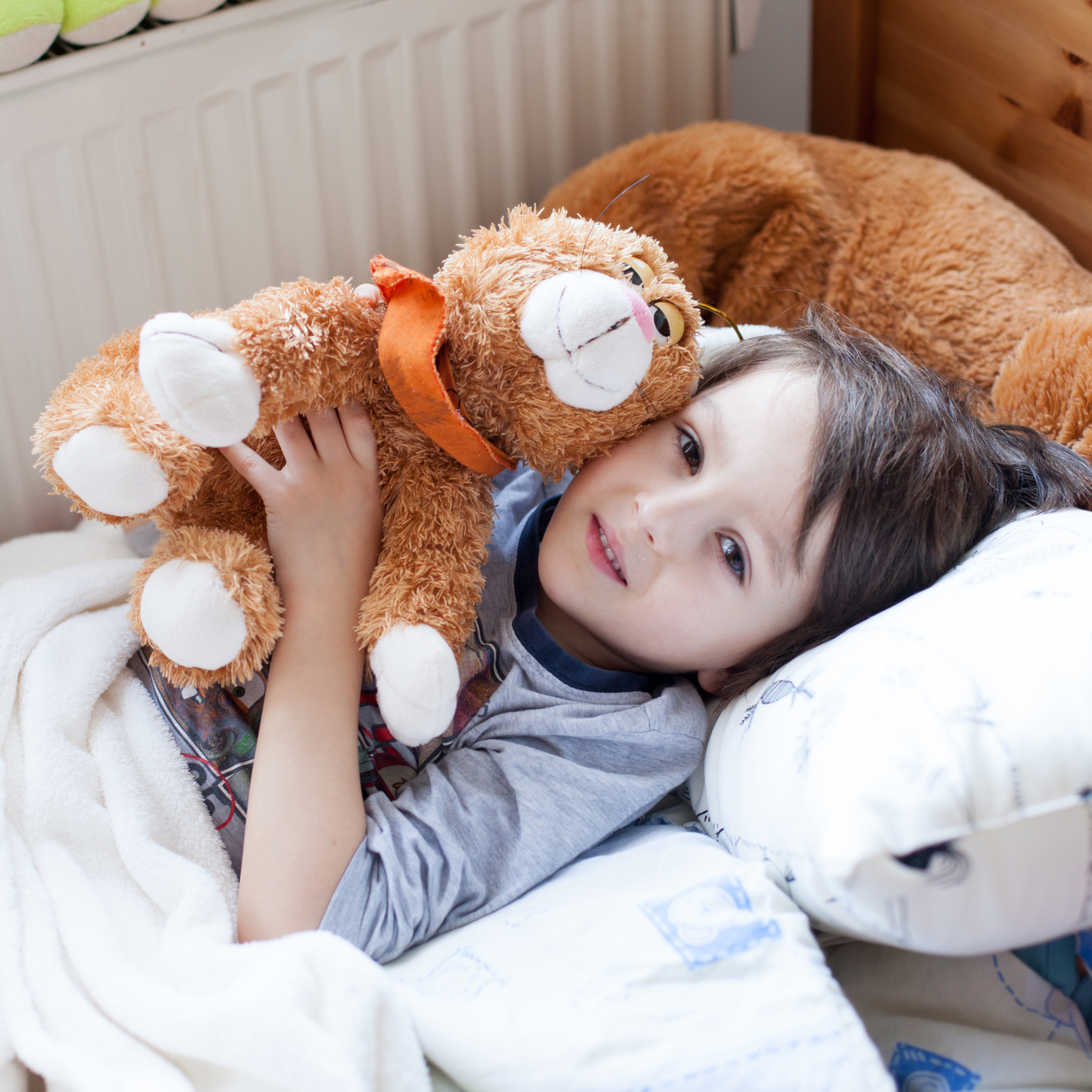Answers to common questions about nosebleeds in children.
Nosebleeds in children are common but they can be scary for both parents and children. Nosebleeds can happen while a child is awake or asleep, with activity or at rest. There is often no warning and a tiny nose can gush a great deal of blood.
Many times, nosebleeds, also called epistaxis, are due to nose injuries. While we expect nosebleeds with external injuries, such as falls or sporting accidents, the most common cause is children aggressively picking or rubbing their noses. Fingers in noses and hard rubbing create sores on the front part of the septum (the piece of bone and cartilage that separates the right and left sides of the nose).
Other common causes include dry noses, allergies and foreign bodies. Bleeding down the back of the nose and throat only (without bleeding from the front of the nose) is rare and should be promptly evaluated by a health care provider.
How do I help my child during a nosebleed?
- Have your child lean slightly forward. Many people think that you should tip the head back, but this can cause blood to run down the throat, which can cause nausea and a choking sensation.
- Pinch the soft part of the nose, right where it meets the hard part of the nose. Pinch for 10 to 15 minutes without stopping. Use a clock to keep track of the time, and do not let go to check on the bleeding until the 10 to 15 minutes are up. If the nose is still bleeding, repeat this process a second time, again for 10 to 15 minutes by the clock.
- Encourage your child to breath through the mouth, and spit out blood rather than swallow it.
- Over-the-counter nasal decongestant sprays, such as oxymetazoline, can help stop bleeding. You may spray it in the nose before pinching. This shouldn’t be used at home for children under 6 or in children with heart disease, high blood pressure or glaucoma. If you are unsure whether it is safe for your child to have this medication, ask his doctor.
- Relax and help your child relax. Your fear can transfer to your child. Help with slow, steady breathing, keeping the head forward and not swallowing blood.
What steps can I take to prevent my child from having nosebleeds?
Maximizing moisture in the nose and minimizing irritation are the keys to preventing nosebleeds. You can do this by using a humidifier, especially at night. Children with frequent nosebleeds also benefit from use of water-soluble nasal gels used once or twice a day. When using these gels, remember to use a small amount right at the entrance to the nostril. Applying the gel too deep into the nose can cause more irritation or damage.
You can minimize irritation by achieving good control over allergies, if present. Most importantly, work with your child to minimize injury from nose picking and nose rubbing.
When to should I seek emergency care for my child’s bloody nose?
Seek emergency care if the nosebleed was from a significant facial injury, if you cannot get the bleeding to stop after taking the steps above, or if your child feels faint or passes out.
If nosebleeds are a frequent problem, your child’s primary health care provider may refer you to an ear, nose and throat specialist for evaluation and treatment.
I’ve done all the prevention, but my child is still having nosebleeds. What treatments are available?
Your doctor will review prevention strategies and medicines that can worsen nosebleeds. If all this has been done and bleeding is still an issue, the most likely source is a sore in the front of the nose. Your doctor may recommend cauterizing this area. Cautery is often done with silver nitrate, the same chemical used to stop bleeding from the umbilical cords of newborns. Young children may need to go to the operating room for this. Cooperative older children can have these procedures right in the office.
Siva Chinnadurai, M.D., is a Pediatric Otolaryngologist at Monroe Carell Jr. Children’s Hospital at Vanderbilt. A St. Louis native, he came to Vanderbilt from the Mayo Clinic and enjoys traveling with his wife, Kelsey.


Vanderbilt’s Children’s After-Hours Clinics offer the convenience of a walk-in clinic with care provided by a board-certified pediatrician from Children’s Hospital. No appointment is necessary, but we recommend calling your pediatrician first. Learn more about services and find locations for Children’s Hospital After-Hours Clinic here.

